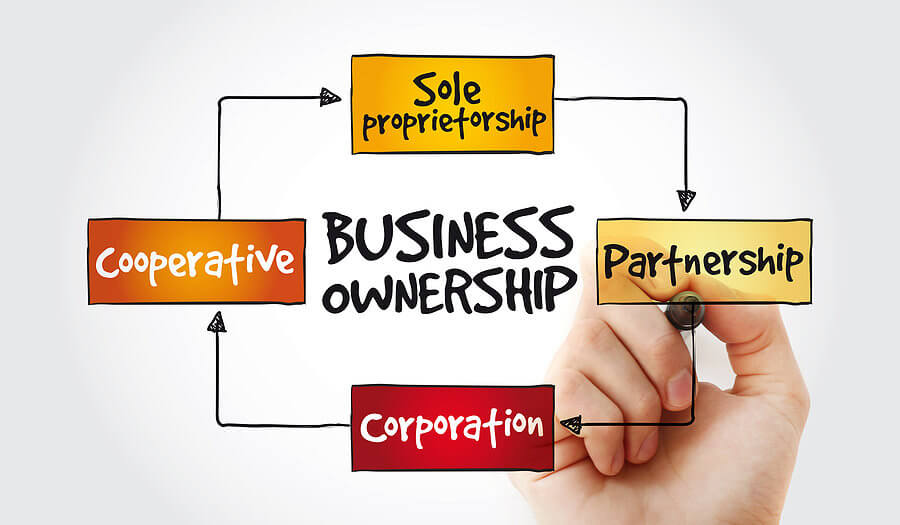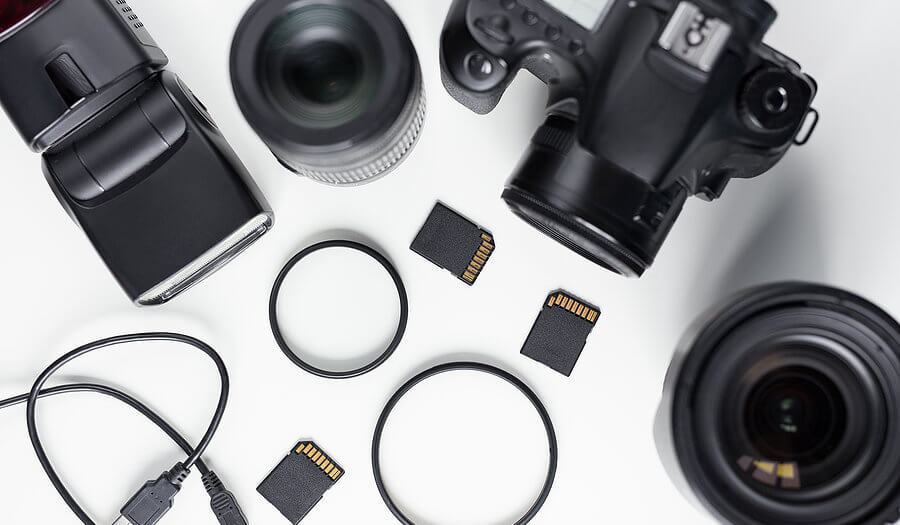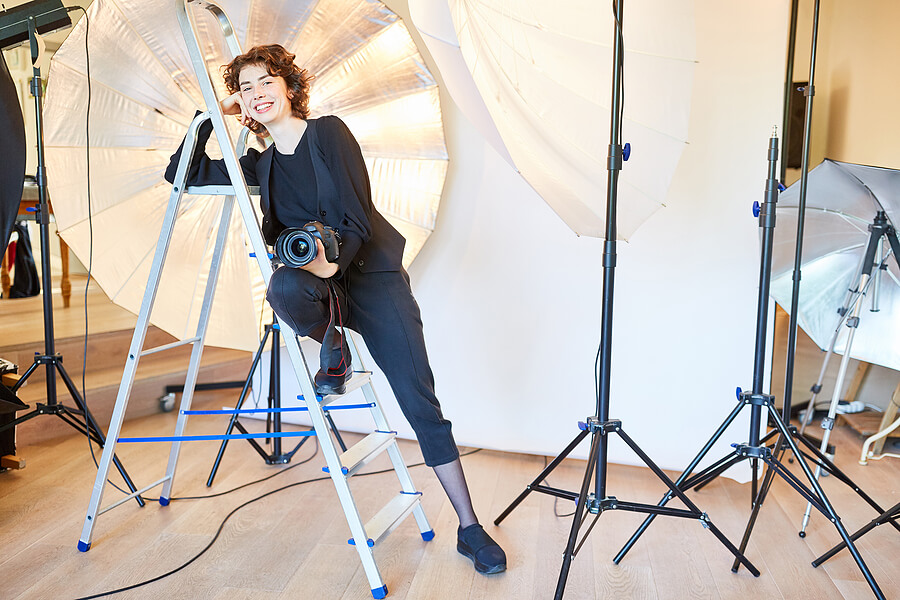Last Updated on January 11, 2023 by pf team
In our comprehensive guide on how to start a photography business, we’ll tackle everything from creating your business plan to growing your business thereafter.
Starting a photography business is one of the most popular creative activities. In the US alone, the industry employs more than 230,000 people.
Furthermore, industry revenue continues to grow, and it’s expected to reach a value of $11.2 billion by 2025. So, if you want a slice of that pie, now’s a great time to start planning.

Whether you’re a practical amateur or a skilled professional with years of experience, starting a photography business can be a lucrative opportunity.
While it might seem like a competitive market, it’s important to target the right niche and come up with a solid plan. But all you really need to get started is a passion for photography and a desire to get paid.
So, let’s start!
In this article :
1. Create your photography business plan
Every good business idea starts with a plan, even if you’re going to be a solopreneur working from home. Fortunately, you don’t need a business degree. And a business plan doesn’t have to be a lengthy and complex document full of jargon either.
Instead, you should treat it as a roadmap to where you want to take your business in the years ahead. You can write it all down by hand, on a computer, or whatever way you feel comfortable with.

Here are the five key steps your plan should cover:
Choose your photography niche
The photography industry is highly competitive, but it’s also very broad. There are hundreds of potential niches you can target, but here’s an overview of some of the bigger ones:
- Landscape photography is all about capturing nature or urban scenes. It doesn’t have to be all about horizontal photos either. Sometimes, a portrait photo is ideal for bringing a scene to life. These days, you can also use drones to get a bird’s eye view.
- Portrait photography is one of the broadest niches. For example, professionals in this niche often capture famous personalities and models. Other options include wedding photos, family portraits, or headshots for business use.
- Still life photography is a popular niche that’s all about taking photos of objects for artistic or advertising purposes. For example, you may specialize in photos for the food or fashion industry.
- Sports photography is one of the harder niches to get into. Firstly, there’s often a lot of high-speed action going on, not to mention plenty of crowds and competition. These photographers often use highly specialized lenses.
- Wildlife photography has a lot in common with sports photography in the respect that subjects aren’t posing for the camera. One of the biggest challenges here is taking clear images without intruding on natural habitats.
- Macro photography is one of the more artistic niches. In this case, it’s about taking images of small scenes and objects like flowers, bugs, and droplets of water. This niche is also important in scientific research and education.
- Long exposure photography is another artistic niche, which involves longer shutter speeds to capture scenes you’d never see with a naked eye. It’s very popular for night and astrophotography.
- Photojournalism revolves around covering scenes and stories for the news. Unlike other niches, it’s less about picture-perfect shots, and more about capturing candid moments to help tell a story. Also, it can pay a lot of money.
Market research
Once you’ve chosen your ideal niche, you’ll need to find your place in the market. This helps you define your value proposition, or what will make your services unique.
Even if you already have the right skills, it’s important to home in on your niche by studying the industry. Look for facts and figures about your niche, and find out what your competitors are doing.
That way, you’ll be able to draft a solid business plan and make the right choices. Remember too, that there are a lot more amateurs than professionals in any niche. You’ll want to focus on the latter during your research.
The best way to start is by searching for relevant keywords in Google. See who’s ranking at the top, and figure out what you can offer that they can’t.
Next, make a shortlist of the things you like about their business and the things you don’t. For example, a competitor might have a great portfolio, but they’re very costly, or they don’t serve customers in your area.
Establish your business pricing structure
One of the harder things when starting any home business venture is figuring out how much to charge for your services.
How much you charge for your photography services depends on many variables, such as your niche, region, level of skill and experience, and how much your competitors are charging.
Regardless of how much they charge, most photographers use an hourly pricing structure. Others might charge per photo session, and account for some flexibility with regards to time.
In addition, you might also charge for addon services. For example, some photographers also offer printing and framing services. As with any business, photographers should also familiarize themselves with the cost of goods sold (COGS).
This includes things like lab fees, packaging, and shipping. Don’t forget, if you’re offering extra post-processing services, like HDR, you’ll likely charge an extra labor fee too.
Estimate your start-up costs
Starting a photography business requires investment. For a home business, the largest start-up expense will no doubt be photography hardware. Unless you’ve got ample money to invest, you’ll want to start off with the minimum.
There’s no point in buying a $10,000 DSLR camera when your business isn’t making any money yet. Assuming you have space for a home studio, here’s what you’ll need to think about when estimating startup costs:
- Cameras (you’ll probably want two)
- Multiple lenses, depending on your niche
- Photo editing software, to edit your photos
- Additional memory cards
- Computer and high-resolution monitor
- Website building and hosting
- Webinar software for marketing your photography business
- Business licenses
- Business cards
Chances are the photography equipment itself will account for well over half of the total startup budget. As a rough guide, expect to invest anything between $5,000 and $10,000 to get your business off the ground.
Estimate your expenses
Every business costs something to run, both in terms of one-time expenses and ongoing ones. Accurately estimating these costs will help you get your pricing structure right too.
One-time expenses include things like computer hardware, software licenses, and of course, photography equipment. A lot of your startup costs will, to some degree, end up as recurring costs.
Fortunately, you usually only need to make these investments when your business is growing, and your profits can easily cover the costs.
You’ll also need to estimate your ongoing expenses, such as website hosting, printing fees, software licenses, and professional services.
Assuming you’re working from home, you should assign a rental value to the area you use for work. You may be able to deduct this as an expense from your taxable base. Finally, the next biggest ongoing expense you’re likely to have is marketing.
2. Get financing for your photography business
Every business requires some investment, even if you’re a sole proprietor working from home. While companies tend to use terms like ‘seed funding’ and ‘venture capital’, entrepreneurs usually fund their projects with their own money, a bank loan, or crowdfunding.

Here’s a look at the options:
Small business financing options
Unless you’re planning to start something truly revolutionary with the help of a large team, you probably won’t be looking to angel investors or venture capital firms.
Instead, you may look to small business loans and funding opportunities. However, you’ll need collateral and a strong credit history to apply. If you’re a recent college graduate, this might not be an option.
- Crowdfunding has become one of the most popular funding sources for entrepreneurs. This is when a large group of people invest small amounts of money through a platform like Kickstarter or Indiegogo.
- Equipment loans are ideal for new photography businesses, since you’ll likely spend most of your startup budget on equipment. Many retailers offer a ‘buy now pay later’ option, but you’ll still need a good credit score.
- Credit cards might be worth a look if you only need to borrow a few thousand dollars. However, interest rates tend to be high. Thus, these loans are best if you’re sure you’ll be able to pay them off quickly.
Finance a small business without loans
Borrowing money is a lot harder if you’ve recently left college and haven’t built up a good credit history. Even if you’re comfortable paying back the loan, there’s always a degree of risk.
You may end up under a lot of pressure to grow your business. That’s why it’s always better if you can fund your photography business yourself.
- Family and friends might be willing to help you, especially if they have some savings to spare. You may even offer them a stake in your business. This is a great option if you don’t have a good enough credit history to obtain a normal loan.
- Equipment leases are a great alternative to loans, especially when you don’t have a strong credit history. Also, they’re ideal for new photography businesses, since they don’t require any long-term investment. You will, however, have to pay a deposit.
3. Establish your photography business structure
There are four main business structures in the US: sole proprietorships, partnerships, limited liability companies, and corporations. Corporations don’t really apply in this case, so we’ll consider the other three options instead.

Sole proprietor
Most professional photographers are sole proprietors. This is the simplest business structure, and it’s the most common. Other countries often have similar business models for self-employed professionals.
Sole proprietors are responsible for their own accounting and paying self-employment taxes. However, unlike more advanced business models, there’s no financial protection. As such, they’re responsible for any debt or other financial obligations.
Partnerships
If you want to partner with one or more other people when starting a photography business, you may want to look into formalizing the arrangement. In a partnership, each partner takes an equal share in the profits and debts.
Moreover, each partner is personally liable for the business’s financial obligations. You can form a partnership through an informal, oral agreement. However, the best option is to have a written contract.
That way, it will be easier to resolve any disputes or lawsuits between partners.
LLC
Limited liability companies (LLCs) are a newer type of business structure. You can form an LLC as a partnership or a corporation. Either way, this structure provides extra legal and financial protection.
You can also manage them as partnerships, and taxation rules depend on the structure. Despite the benefits of having an LLC, forming one is a bit more complex. Firstly, you’ll need a business account.
Secondly, you’ll have to keep up with record-keeping and any licensing requirements to enjoy those benefits. Forming an LLC is ideal for more ambitious entrepreneurs, such as those planning on making a full-time income from their photography business.
4. Choose a brand for your photography business
Every business needs a brand which sets it apart from the rest. And there’s a lot more to a brand than a name or logo. It’s a personality, and it’s more important than ever.
It’s how you portray your business online and offline, and it will give people something to remember you by.

Register your business name
For some people, the business name is the first thing that comes to mind. But, for others, it requires a lot of thought. Your brand name might be a catchy phrase that captures your values and personal style.
Or, like a lot of photographers, you might just name your business after yourself. It’s important to remember that brand names aren’t the same as business names. Your business name is a legal entity, and it might not be the same as the brand name people will come to know you by.
When thinking of a business or brand name, you should make sure it’s not already trademarked. If you’re in the US, you can find out if a name is already taken by searching uspto.gov.
Create a logo for your business
People respond best to visual cues. We’re subconsciously more likely to remember a logo than a brand name. A great logo grabs attention, makes a strong first impression, and is the foundation of your brand.
In other words, the colors, tones, and fonts in your logo usually define your overall visual style. This will come in handy when you’re building your website or any other marketing assets.
There’s an extra thing photographers need to think about when designing a logo. Most photographers also use their logos as watermarks to protect their work.
That’s why you’ll likely want to design a logo that looks good in a single color as well. Ideally, your logo should also include the name of your brand.
5. Launch your photography business
Now you’ve got your business plan and branding in order, it’s time to officially establish your business. It might take a few weeks to get all the necessary papers in order.
Also, you’ll need to buy equipment and supplies, and set up your accounting and payment systems.

Get licenses and permits
Depending on where you’re doing business, getting the licenses or permits you need can be time-consuming. So, it’s best to get the ball rolling as soon as you’re certain you want to start a photography business.
If you’re in the US, most jurisdictions don’t require a professional licensing for starting a photography business. But there are some exceptions. For example, some local regions require a license for certain types of professional photography.
You need to be sure, so reach out to the licensing board in your state or region and the local city hall. If you do need a license, you might need to pay a nominal fee, and it could take a few days.
Get a federal and state tax ID number
Every jurisdiction in the US requires photographers to pay sales tax, so you’ll need to register for a sales tax license. This is usually quite a simple process, and you can apply online in a matter of minutes with your local taxpayer service center.
You can find further information at sba.gov. Other countries often have a similar regime. For example, in the UK, sole proprietors should register for self-assessment with HMRC.
While every professional photographer needs to pay sales tax, it’s not always obvious what it applies to. For example, you might not be required to collect sales tax for every service you offer.
Of course, it’s easier to collect sales tax on the entire bill. However, it can work out more expensive, so it’s a good idea to consult an accountant first.
Open a business bank account
If you’re a sole proprietor, you’re not legally required to have a separate business account. The same applies to partnerships, depending on the business model. But, having a business account can still make your accounting easier.
If you’re going to hire an accountant, it could also be cheaper and easier if you keep your business incomes and expenses separate. You need to have a registered business in the US before you can open a business account.
You’ll need to present proof of registration when applying. Other things you’ll need include a photo ID, and proof of address. If your home and business address are different, you’ll need proof of both.
Most banks in the US require a minimum deposit for opening a business account. The amount varies between banks, so be sure to check first. Finally, you’ll usually need to visit the bank in person, so opening a bank account from abroad is not likely possible.
Get a business credit card
You don’t have to get a business credit card, but it’s not a bad idea to have one. Business credit cards often have extra rewards and perks, and they can help cover any startup costs.
Many credit cards waive interest fees too, provided you pay off any debt within a month. Any sole proprietor can apply for a business credit card. Again, you’ll need to provide proof of business registration, a tax identification number, and your business address and phone number.
Some banks might also ask for an overview of your annual business revenue and estimated monthly spend. In this case, you might not be able to apply until you’ve already been in business for a year or more.
Set up accounting solutions
Choosing the right accounting software will help a lot when it comes to tax time. Accounting software is usually cloud-based, so your information stays online where it’s safe if your computer breaks down.
This also makes it easy to access and update your accounts from any device or location. Ideally, your accounting software should include templates for invoices, proposals, contracts, and all the other paperwork you need to run your business.
After all, the whole point it to save time and make running your business easier. We recommend FreshBooks for small business accounting. It’s a popular industry standard that automates routine processes and includes useful reports.
Set up payment methods
When it comes to getting paid, the number of options can be overwhelming. Chances are, you’ll want to use payment methods which are cheap, quick, and easy. At the same time, you also need to be as accommodating as possible to your clients’ needs.
PayPal is one of the most popular solutions for online payments, but the fees are high. However, using PayPal does allow your clients to pay by credit or debit card. If you have a business bank account, you should also be able to obtain a card reader.
This will allow you to accept payments from clients when you’re away from home, provided you have an internet connection. Finally, direct bank transfers are the cheapest option, but they’re also among the most time-consuming.
Get insurance for your business
If you’re a sole proprietor, you won’t have any financial protection for your business without taking a few extra steps. Moreover, having an LLC only protects you from lawsuits, and even that’s limited.
By choosing business insurance, you can ensure your assets are fully protected. Chances are, you’ll need a home-based business insurance policy, which covers you for third-party liability and a small amount of business equipment.
When choosing an insurance provider, be sure to assess your risks and determine the value of your assets. For home businesses and sole proprietors in the US, we recommend Hiscox.
6. Create an online business presence
The days of advertising in local papers and classifieds are pretty much over. Today, your business will mostly come from online sources. Building a strong online presence is essential for your visibility and promoting your talent and experience.

Choose a domain name and website hosting
The first thing you’ll want to do is register a domain name. Usually, this will be your business or brand name followed by .com. However, if you’re in a country other than the US, it might make sense to use your country’s top-level domain (TLD).
Examples include .co.uk for the United Kingdom or .ca for Canada. Also, avoid using hyphens in your domain, and make sure it’s easy to remember. Next, you’ll need to choose a hosting company for your website.
Most people register a domain and purchase a hosting package from the same company, since it’s easier and often cheaper. We recommend Bluehost for small businesses. It also comes with one-click WordPress installs, so you have a blank website up and running straight away.
Build a website for your business
You don’t need to have any coding skills to start a website. Instead, you’ll use a drag-and-drop content management system (CMS) like Wix or WordPress. This makes it much easier to update your website and change its look and feel.
Just be sure to choose a website theme that looks great on a smartphone screen, since that’s likely what most of your clients will be using. If you choose a hosting package which includes a CMS, you’ll have a basic website up and running right away.
All you’ll need to do is choose a theme, upload your content (such as visuals and articles), and install any plugins you need for extra functionality. You can usually build a professional-looking website and portfolio in a day.
If you’re using WordPress, you may want to choose a photography-specific theme and install a portfolio add-on to showcase your work.
SEO tools
Most people first find out about a business when searching on Google. That’s why you need to ensure your website appears in the results when someone enters a relevant keyword.
This is known as search engine optimization (SEO), which requires targeting certain key words and phrases to build visibility. SEO is quite a technical topic, but it’s worth reading up on when you’re building an online presence.
It also helps to use a keyword research tool to help you optimize your website content and build backlinks. We recommend SEMrush, which is one of the world’s most popular online marketing tools.
Moreover, it provides competitive research features, reporting and management, and social media marketing tools.
Photo editing software
The most important software in any professional photographer’s toolset is photo editing software. There’s a lot to choose from as well, but by far the most popular is Adobe Photoshop.
It’s the industry standard for professional photographers. It provides layered editing, support for RAW file formats, and lots of filters and presets. However, you will need a paid subscription, as there’s no one-time purchase option.
Be sure to check out our recent article comparing the best photo editing software to help you choose the right one.
Management tools
Finally, you’ll need a few other tools to make running your business easier. If you’re expecting to have a lot of jobs on at the same time, it may help to have a project management tool.
For example, Trello or Asana help you keep track of complex, multi-stage projects. As your business grows, you might also want to invest in extra tools for helping with customer support.
If you’re planning to hold online training sessions or client interviews, you’ll need webinar software. Examples include Zoom and Skype for Business, but you can find more options in our recent roundup.
Lastly, to ensure your growing photo archive is safe from accidental loss, be sure to choose a cloud storage service. Examples include Microsoft OneDrive, Dropbox, and Google Drive.
7. Gather photography equipment and supplies
When you’re starting a photography business, most of the focus is on things like portfolios, plans, and marketing. Of course, they’re all needed for getting your business off the ground.
But you’ll also need to see to the technical needs of your future customers.

Equipment
Even the most expensive DSLR camera isn’t going to cut it if you don’t have the right extras. You also need to think about specialized equipment for your photography niche.
- Cameras. The best camera depends on your niche. Commercial photographers may be best off with a high-resolution, medium-format camera. Others might find a mirrorless camera more suitable for its lighter weight and portability.
- Lenses. Again, choosing the right lenses depends on the sort of photos you take. A portrait photographer may, for example, use a lens with a long focal length for taking headshots and another with a shorter focal length for dramatic wedding photo portraits.
- Lighting. You can do a lot of post-processing to give your photos the best lighting, but it’s important during shots as well. Depending on your niche, you may want to invest in a speed light, reflector, and light stand.
- Computer. A cheap laptop isn’t going to handle photo editing very well. Ideally, you’ll have a high-spec machine with at least 8GB of memory, a quad-core or better CPU, and ample storage space for your growing photo archive.
- Drones. If you’re into aerial photos, you’ll need a drone with a built-in camera. Key features to look for include speed, durability, battery power, portability, and decent collision-avoidance.
Accessories
Photographers often need lots of accessories, and the total cost of getting them all can quickly add up. Still, investing in quality accessories can certainly help make your life easier.
- Camera bags and cases are important for protecting what’s likely your most valuable possession – your camera. Choose something that’s durable, waterproof, and has that professional look your clients will expect.
- Tripods are essential in many types of photography, such as macro photos, panoramic shots, and difficult angles. Choose a sturdy tripod that suits your needs, and pay close attention to specs like height and weight rating.
- Batteries. The last thing you want during a photo session is for your camera to run out of batteries. Always carry a charger in your camera bag, and a spare battery for those sessions which end up running longer than expected.
Darkroom equipment
If you’re into traditional photography, you’ll likely want to make your own darkroom. That way, you’ll be able to develop your own photos.
- The room itself can be any room in your home, provided you can make it light-tight. If you have a windowless walk-in closet, that might be ideal. Split the room into two sections – a wet side and a dry side.
- The wet side is where you’ll develop your photos. You’ll need trays, pairs of tongs, film clips, a funnel, and a graduated cylinder. Finally, obtain the developer, stop bath, and fixer chemical solutions from a professional photography store.
- The dry side is where you’ll keep your outputs. For this side, you’ll need a film tank, safelight, easel, timer, and grain magnifier. The dry side should have a power outlet for plugging in the safelight.
- Enlarger. The enlarger is the most important device in any darkroom.This lets you produce prints of varying sizes from the negatives. They come in many different sizes, with the right choice depending largely on the focal lengths you use.
Underwater equipment
Underwater photography is a popular niche, but it’s not one of the easiest to get into. For a start, you’ll need some special equipment.
- Underwater camera housing. If you have a high-end DSLR camera, there’s a good chance the brand also makes an underwater housing for it. That way, you can continue using the camera and lenses you’re used to.
- Underwater cameras come in many different forms. If you only take a few underwater shots, a GoPro might be fine. But if underwater photography is one of your main focus areas, a professional diving camera would be the better choice.
- Strobes, while not always needed, can make a big impact on your underwater photos. They bring more light to the scene to help bring out the colors better, which is good at greater depths.
Other supplies
Finally, you’ll have your regular supplies to take care of. These include any supplies you need to offer extra services, such as printing and framing.
For example, you might need photo paper, photo albums, frames, and printer ink. If you’re going to have a darkroom, you’ll also need a regular supply of developer, stop bath, and fixer chemicals.
8. Find customers
Now for the exciting stuff – getting your first paid job! Finding your first clients can be time-consuming, but it will give you a chance to build up your portfolio. It’s also an opportunity to hone your skills and build a stronger reputation.

Offer your photography services on your website
Even if you don’t get many new clients through your website, it’s still a place for your portfolio and providing information about your business. You can also offer services directly through your website.
At the very least, your website should have an About page and a Services page. On the latter, be sure to list all the services you offer, as well as any extras like printing and framing.
If you offer a wide range of services, it might not be practical to list all your prices. Either way, you should encourage potential clients to contact you by phone or email first.
Be sure to have a contacts page, but also keep your email address visible on every page of your site.
Create, sell and teach photography courses
If you have a few years of experience and a lot of useful knowledge to share, you might consider creating a course. For example, you can write ebooks or publish courses and sell them online as a side income.
This can also help you build a stronger reputation and earn more clients. We recommend Thinkific for creating and selling online courses. The platform also helps you launch membership sites with your own branding.
Moreover, you can build a course using quiz templates, and a drag-and-drop builder. You choose the pricing, lesson schedule, and curate and automate the learning experience with a range of powerful tools.
Another place where you can teach photography courses is the online learning platform Udemy. Udemy lets you plan your course, record and upload videos, and build a community for your students.
Look for photography gigs on freelance websites
Since you’re running a home business, one of the best places to start is the freelancing marketplaces. While you might not be able to get the best rates for your work, these platforms are ideal for building up your portfolio.
They do take a commission, but there’s rarely a faster way to get your business off the ground. Moreover, the platform handles payments and advertising and mediates any disputes on your behalf.
We recommend Fiverr for starting an online photography gig. However, as it’s an international market, you might want to expand your services beyond those which require you to be physically present.
For example, you might offer extra services like graphic design or post-processing existing photos with Photoshop.
Sell your pictures on photography websites
Stock photography can be a great segue into more specialized niches. You can sell your stock photos on many online platforms.
This will help you expand your portfolio, establish your reputation, and find new customers. Here are some of the best-paying stock photography markets:
- Getty Images is one of the harder to get into, but it’s also one of the best paid. Firstly, you’ll need to look out for editors on platforms like Flickr and LinkedIn and reach out to see if they’d be interested in working with you.
- iStock Photo offers royalty rates of up to 45%, although this is reduced to 15% if you want to sell the same photos on other platforms too. Anyone can open a seller’s account, but you’ll need to pass a quick test and submit samples of your work.
- Shutterstock is one of the best-known stock photo websites. You can earn up to 33% of a sale, with rates increasing the more you sell. They also have a referral program, which lets you earn a commission from any sales your referrals make.
9. Market your photography business
As with any home business, you’ll likely spend more of your time on marketing than anything else. When you’re building a portfolio and a regular client base, you’ll need to put a lot of time and effort into marketing.
But, once you have plenty of clients, you’ll be able to rely more on referrals. As such, how you market now can influence your business for years to come.

Webinars
This one is closely related to online courses, but there’s a big difference. Rather than viewing webinars as a paid gig, you can instead treat it as part of your marketing routine.
Webinars can help you build a stronger reputation, as well as engage with your clients on a more personal level. The most effective webinars are those where you share some useful knowledge, as you would in any training session.
But, by offering free photography webinars, you can market your business too. We recommend WebinarJam, a cloud platform that allows you to reach up to 5,000 people in a single presentation.
You can also have up to six presenters, which is great for bringing on other experts in your field to build authority.
Email marketing
Despite claims that email is no longer useful, it’s one of the easiest and cheapest ways to keep in touch with your clients. It’s also professional, and it feels more personal.
Always use a business email address, preferably one using the same domain name as your website. This looks a lot more professional than using something like @gmail.com or @yahoo.com.
Your email newsletters should provide useful and interesting content, such as helpful tips and updates on any events and special offers you’re launching.
You’ll need an email marketing platform to automate your newsletters and subscriber lists, especially once your audience grows. We recommend Convertkit, which is ideal for small home businesses.
Paid advertising
Paid advertising can get costly before it becomes effective, but it can still be a powerful way to grow your audience when you’re starting out.
Most platforms let you set a strict budget. It’s less risky if you can pay for clicks rather than impressions, since it’s closer to where the money is. An impression, by contrast, only refers to when someone sees your ad, regardless of whether they engage with it.
The most effective ads are visual, especially in an industry like photography. Almost all the major social networks and search engines are also ad networks.
Instagram is one of the best for photographers, since it’s a picture- and video-sharing platform. However, we also recommend Facebook and Google Ads for boosting your visibility.
Social media groups
Social media is one of the most important marketing tools for any business. You should set up profiles on all the major networks, but it’s best to focus most of your efforts on just one or two.
You may also want to set up groups where your clients can easily reach you. If you build a strong community of like-minded people around your photography business, you’ll also boost client loyalty and referrals.
Having profiles on Instagram and Pinterest are a must for any photographer. However, we also recommend having an active Facebook account.
Finally, Twitter can be useful for sharing quick updates, while LinkedIn is ideal if you’re after a business audience.
Advertising materials
Even in today’s online world, there’s still value to be found in traditional advertising materials. It also looks much more professional if you give your clients a business card.
Also, since most photographers offer their services locally, regularly handing out or displaying brochures and other printed materials can help you find clients faster.
Finally, you might consider printing out posters to display in local shop windows and noticeboards.
10. Grow your photography business
Marketing your business isn’t something you do once and then it’s over as soon as you’ve landed a few clients. Clients come and go and, as you become more experienced, you may offer a wider range of services or increase your prices.
You might even find yourself needing a little extra help once you reach a certain point.

Reinvest in your business
You should always aim to have at least three months’ worth of income saved up before you think about reinvesting in your business. Once you reach that threshold, you can start saving funds for investing in your business.
The time might come when you need a better and newer camera or lens upgrade. Or, you might need a better computer to run modern photo editing software more smoothly.
If you feel your equipment is holding you back, that’s what you should be reinvesting your money into. If your client portfolio needs an extra boost, you might consider investing in advertising.
Keeping paid ad campaigns going can bring in a steady stream of new clients, and you also have full control over the budget.
Diversify your services
Reinvesting can also help you diversify your income streams. For example, a landscape photographer might start specializing in aerial photos, in which case they’d need to invest in a drone.
Or, maybe your photo editing software will be due for an upgrade if you want to tackle the world of HDR photography. Adding a wider range of services to your portfolio helps you reach more people and upsell extra services.
However, it’s still important to focus on your niche to avoid coming across as a jack of all trades. It’s best to diversify into areas related to your niche. For example, someone who takes wedding photos might start offering maternity and newborn photos too.
Finally, as we mentioned before, launching an online course can be a great way to earn a side income once you’ve got the skills and experiences to share.
Hire help
When you’re starting your business, you wear all the hats. Not only will you be setting up photo shoots and doing all the editing – you’ll also have to take care of any administrative tasks.
Eventually, there might come a point where it’s simply too much work to handle. And, since you’re a pro, we assume you’d rather focus on doing what you love, and not on all the peripheral activities.
Once your business reaches a certain point, you should think about hiring help. For example, you could have a secretary to handle quotes and queries and keep your filing in check.
You might also hire extra help with photo editing by heading to one of the freelance marketplaces like Fiverr or Upwork.
Improve your skills
As with any creative work, there’s never a time when you stop learning. A great way to reinvest into your business is to enroll in online courses or take group classes.
It’s important to keep your skills sharp and also diversify them so you always have plenty of opportunities on hand.
Final words
We hope this guide gives you a thorough overview of what you need to think about when starting a photography business. Here’s a quick wrap-up of what we’ve learned:
- Research your market, find a niche, and create your business plan
- Find a way to financially support your business
- Choose a name and branding for your business
- Gather equipment and supplies, and launch your business
- Build your portfolio, and establish your marketing routine.
